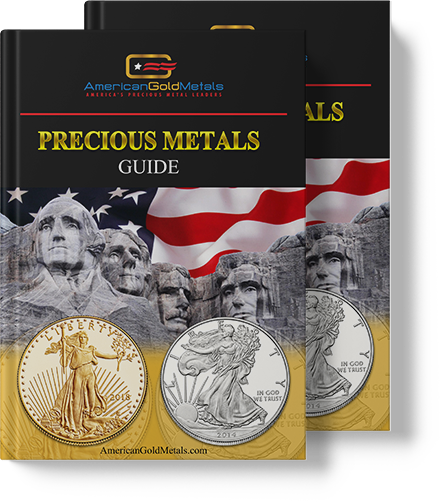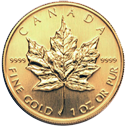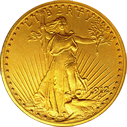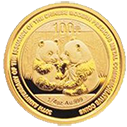GLOSSARY
CALL TODAY TO GET STARTED!
 800.528.0545
800.528.0545
ACID TEST: A means of determining the fineness of gold through the use of nitric acid.
ACTUAL GOLD CONTENT: The amount of gold that exists in an object when all the alloys have been subtracted.
ALLOY: A mixture of two or more metals. Metals such as silver, nickel, copper and zinc are frequently mixed with gold to improve its hardness and/or change its color.
American Eagles: Products of the U.S. Mint and since their debut in 1986 have become this country’s most popular gold bullion coin. Struck in a traditional coinage alloy of 91.7% pure gold (22 karat), each size contains a full measure of pure gold, plus additional silver and copper as alloy.
Ask: the price at which a dealer offers to sell.
ASSAY: An analysis of a metal used to determine its purity. A series of assays can be run to determine the alloys in the metal as well.
Australian Kangaroo: Australia’s gold Nuggets (now Kangaroos) were introduced in 1986 as a .9999 fine bullion coin. Each year the design is changed, since 1989 with various portraits of kangaroos. Coins come individually encapsulated in a squareplastic case.
AUSTRIAN Philharmonic: Austria’s .9999 gold Philharmonics came out in 1990, and quickly became Europe’s most popular gold bullion coin.
Base Metal: Also known as pot metal is a mixture of non precious metals. It is frequently used as a base for gold-filled, gold plated or rolled gold plate coverings.
Bear Market: Describes investment markets such as stock markets or metals markets in which prices are, or are soon expected to be, in decline. The opposite of a bear market is a bull market.
Bid: the price at which a dealer is willing to buy.
British Sovereign: British gold Sovereigns were struck worldwide at the height of the British Empire. Each is 91.7% pure (22k) and contains .2354 troy ounce of pure gold.
BU: Brilliant uncirculated, used to describe a coin in new condition.
Bull Market: Describes investment markets such as stock markets or metals markets in which prices are, or are soon expected to be, on the rise. The opposite of a bull market is a bear market.
Bullion Coin: Precious metal in the form of a coin which trades at a price close to spot. In other words, it has little or no numismatic value.
Bullion: Gold which is 995 fine or better and comes in the shape such as bars, ingots or wafers. Trades close to the spot price of gold and has no numismatic value.
Canadian Maple Leaf: Modern bullion coin minted by the Royal Canadian Mint. This represented the first .999 pure gold bullion coins when released in 1979. Today, they are struck to an even finer purity of .9999 or 99.99% pure gold.
Cash Market:A market in which delivery and payment have to be made within two working days of the transaction date.
Chinese Panda: China’s Panda gold coins began in 1982 as the first ‘premium’ priced .999 bullion coin, featuring a different panda portrait each year. They became hugely popular as collectibles by the late 1980’s. Each coin is individually sealed in a vinyl pouch at the China Mint.
Coin: A stamped piece of metal of a known weight and fineness issued for commerce.
Comex: One of the world’s major commodities futures exchanges where gold and silver are traded. The Comex is in New York City and is a division of the New York Mercantile Exchange.
Commemoratives: Legal tender coins or medallions usually minted of gold or silver to commemorate themes, events, places, or people.
Die: An engraved metal object used to strike or stamp the design on a coin.
Double Eagles: U.S. $20 gold coins used as legal tender 1850 –1933. Double Eagles contain .9675 oz. of pure gold. Early $20 coins had the portrait of Miss Liberty’s profile on the obverse. From 1908-1933 they had Augustus St. Gaudens’ standing Liberty design. This design was appropriated, with modifications, for the various sizes of the modern gold Eagle bullion coins.
Dragon: Australia’s Dragons. The current (year 2000) version is the “Year of the Dragon.” Each coin comes individually encapsulated in a square plastic case. Australia’s Lunar Calendar series began in 1997 as a ‘premium’ priced .9999 bullion coin.
Eagle: U. S. $10 face value gold coins used as legal tender 1795-1933. They contain .4837 ounces of pure gold ALSO: the generic term for the modern bullion coins issued by the U. S. Mint since 1986.
Face Value: The legal monetary value stamped on a coin. See symbolic face value.
Fiat Money: Paper money made legal tender by law, although not backed by gold or silver.
Field: The open area or background on a coin.
Fine Gold: Pure, 24 karat, 999 fine gold.
Fine Weight: The metallic weight of a coin, ingot, or bar, as opposed to the item’s gross weight which includes the weight of the alloying metal. Example: a 1-oz Gold Eagle has a fine weight of one troy ounce but a gross weight of 1.0909 troy ounces.
Fineness: The purity of a precious metal measured in 1,000 parts of an alloy: a gold bar of .995 fineness contains 995 parts gold and 5 parts of another metal. Example: the American Gold Eagle is .9167 fine, which means it is 91.67% gold. A Canadian Maple Leaf has a fineness of .999, meaning that it is 99.9% pure.
French Franc: French 20-franc gold “Roosters” were struck from 1899 to 1916, and each is 91.7% pure (22 karat) pure and contains .1867 troy ounce of pure gold. These coins we offer are almost Mint to fully Mint Condition.
Futures Contract: An agreement made on an organized exchange to take or make delivery of a specific commodity or financial instrument at a set date in the future.
Gold Color: Variations in the alloys used with gold create different colors of gold such as yellow, green, red and white. The most common alloys used with gold are: silver, copper, zinc, and nickel. Silver and zinc tend to give gold a greenish hue, copper a reddish cast and nickel a white color.
Gold Eagles: Modern gold bullion coins. American gold Eagles are products of the U.S. Mint, and since their debut in 1986 have become this country’s most popular gold bullion coin. Struck in a traditional coinage alloy of 91.7% pure gold (22 karat), each size contains a full measure of pure gold, plus additional silver and copper as alloy.
Gold Electroplate: Process by which 24 karat gold is deposited on another metal electrolytic ally. The plating must be at least seven millionths of an inch thick.
Gold Flashed: A gold coating which is less than seven millionths of an inch thick. It is sometimes called gold washed.
Gold Nugget: Placer gold which has been washed out of the rocks generally into river beds where it has been beaten by the water and rocks into a “nugget” shape.
Gold Plate: A common term for electro-gold plating.
Gold Standard: A monetary system based on convertibility into gold; paper money backed and interchangeable with gold.
Gold: A precious yellow metallic element that is resistant to oxidation and is highly ductile and malleable. In the United States, a metal must be 10 Karat gold or more to be called gold.
Grain: The earliest known unit of weight and was originally one grain of wheat or barley. It is equal to 0.0648 grams Troy and 24 grains are equivalent to one pennyweight. There are 480 grains in a Troy ounce and 437.5 grains in an Avoirdupois ounce.
Gram: The basic unit of weight of the metric system a metric unit of mass and weight. A gram equals approximately 1/32 Troy oz. and is used in Troy weight as a measure of gold. (31.1035 grams = one troy ounce.)
Half Eagle: U. S. $5 face value gold coins used as legal tender, and issued from 1795-1929. They contain .24187 ounces of pure gold and were almost identical in size to the nickel 5c coin.
Hallmark: Mark or stamp on a bullion item that identifies the producer.
Hedge: An offsetting transaction (e.g. the purchase or sale of a future contract or option) designed to lessen the impact of adverse movements in the value of assets.
Intrinsic Value: The value of a coin’s metal content.
Inverted Market: A situation in which prices for future deliveries are lower than the spot price: Also known as backwardation.
Karat: (with a “k”) a measure of gold fineness or purity. Pure gold is considered to be 24 karat. For this reason, the actual gold content of any object is the percentage relationship of its purity to 24. For example, 18 karat gold is 18kt/24kt or 75% pure gold or 750 fine.
Kilo bar: A bar weighing one kilogram (32.1507 troy ounces).
Kilogram: 1,000 grams (32.1507 troy ounces).
Krugerrand: South African gold coin Gold Krugerrands from South Africa were introduced in 1967, and dominated the gold bullion market in the U.S. from 1974 through the early 1980’s. They are struck in 22 karat gold (91.7% pure), each coin containing a full measure of pure gold, plus additional copper as an alloy.
Legal tender: Currency in specified denominations which a creditor is compelled by law to accept as payment of a debt.
Legend: The inscription on a coin.
Liquidity: The quality of being readily convertible into cash.
London fix: Two daily bidding sessions in London of five major gold firms, at which the price of gold is “fixed” or set.
Luster: A frosty appearance on the surface of a coin, usually an un-circulated coin.
Maple Leafs: Modern gold, silver, and platinum coins minted by the Royal Canadian Mint. Canada’s gold Maple Leafs are from the Royal Canadian Mint, and were the first .999 pure gold bullion coin (as opposed to a bar or ingot) when released in 1979. Today, they are struck to an even finer purity of .9999(“four nines,” or 99.99% pure gold).
Market value: The price at which a coin or bullion item trades.
Medallion: A round piece of metal resembling a coin but not a “coin of the realm.” A medallion may be issued by a government or private mint. The Engelhard 1-oz silver prospector is a privately-minted medallion.
Metric ton: 1,000 kilograms or 32,151 troy ounces.
Mexican 50 Peso: Gold coin first issued in 1921 to celebrate the 100th anniversary of Mexico’s independence. The Mexican 50 Pesos in the bullion coin market normally are restrikes, minted from 1943 onward. Weight: 1.2057 troy ounces, .900 fine.
Mint: The place where a coin or bar was manufactured.
Mint Mark: A letter or symbol stamped on a coin to identify the minting facility where it was struck.
Mint State: Describes a coin in un-circulated condition.
Modern Issues: Current coins, whether struck for circulation or for sale to investors or collectors.
MS-60: The lowest grade of Mint State coins. Higher-grade coins are labeled MS-61 up to MS-70. Coins showing wear are graded below MS-60 and fall into grades from AU down to G, with G being a coin showing great wear and AU being a coin showing little wear.
Noble: Modern platinum bullion coin issued by the Isle of Man since 1983
Nominal Face Value: Nominal value given to legal tender coins sold for their metal content. Example: the 1-oz Gold Eagle carries a $50 face value but sells for the value of its gold content plus a premium
Nugget: Modern gold bullion coin minted by Australia, .9999 fine.
Numismatic Coins: Coins whose prices depend more on their rarity, condition, dates, and mint marks than on their gold or silver content.
Numismatics: The study of coins, currency and medallic art.
Numismatist: Coin collector.
NYMEX: The New York Mercantile Exchange, a future exchange where platinum and palladium are traded.
Obverse: The front of a coin. The device on the obverse usually consists of the image of one or more people
Ounce: A unit of weight. In the precious metals industry, an ounce means a troy ounce equal to 31.1035 grams.
Panda: China’s Panda gold coins began in 1982 as the first ‘premium’ priced .999bullion coin, featuring a different panda portrait each year. They became hugely popular as collectibles by the late 1980’s. Each coin is individually sealed in a vinyl pouch at the China Mint.
Pennyweight: Equals 24 grains or 1/20 of a Troy ounce.
Philharmonic: Austria’s .9999 gold Philharmonics came out in 1990, and quickly became Europe’s most popular gold bullion coin.
Platinum Eagles: Modern platinum bullion coins minted by the U.S. Treasury.
Premium: The additional cost of gold coin or bullion over and above the spot gold price. The premium includes the costs of fabrication, distribution and a minimal dealer fee. The average premium of a bullion piece at this time is 5% to 15% above spot gold. Rare coins carry an additional premium called numismatic value which is based on scarcity, quality, demand and intangible factors.
Proof: Refers to the manner in which a coin was minted NOT to its condition. Highly polished dies and special plainchants are used to produce coins with a mirror-like finish. A proof strike is very different from a business strike and proof coins are generally made for collectors not for normal use.
Quarter Eagle: U. S. $ 2 ½ face value gold coins, issued as legal tender 1795- 1929. These dime-size coins contain .121 ounces of pure gold.
Restrike: Officially issued reproduction of a former circulating coin.
Restrikes: Are “new” coins made from “old” dies which is why they are referred to as “new mintings”. Restrikes generally have the same specifications as the original coins of which they are copies – this includes the same dates, composition, and dimensions. Restrike coins are officially produced by a government mint and they are usually not legal tender. Government mints pick one date as the “restrike date” for a particular coin. In fact, the original coins made from the dies used for restrikes have no numismatic value because there is no way to tell them from the copies.
Reverse: The back of a coin. The device on the reverse of a coin usually consists of a country’s coat of arms or an insignia.
Short Sale: The sale of an asset for future delivery without possession of the asset sold.
Silver Eagles: Modern 1-oz silver bullion coins.
Slabbed Coins: Coins that are encapsulated in plastic for protection against wear. Generally, “slabbed” coins are graded by one of the two major grading services.
Solid Gold: The Federal Trade Commission rules state that the term “solid gold” can be applied to items which are not hollow and contain at least 10 kt. or finer gold.
South African Krugerrand: Gold Krugerrands from South Africa were introduced in 1967, and dominated the gold bullion market in the U.S. from 1974 through the early 1980’s. They are struck in 22 karat gold (91.7% pure), each coin containing a full measure of pure gold, plus additional copper as an alloy
Sovereign: English gold coin with a face value of one pound sterling and a gold content of .2354 ounce. British gold Sovereigns were struck worldwide at the height of the British Empire. Each is 91.7% pure (22k) and contains .2354 troy ounce of puregold. Condition of these pre-1928 coins we offer is Extra Fine to Almost Mint
Spot Gold Price: The constantly fluctuating price of gold in unfabricated form. The closing spot price varies with markets located in numerous cities and countries throughout the world. It is recommended that one follow the spot gold close from one particular source in order to consistently gauge the fluctuations in the world markets. Commonly quoted gold markets include: New York City, Chicago, Handy and Harmon, Engelhard, Republic National Bank, London, Zurich, Paris, Frankfurt, and Hong Kong. Note that when buying gold in the United States, the price will generally be based on the prices in New York or Chicago.
Spot Market: A market in which delivery and payment have to be made within two working days of the transaction date.
Spread: The difference between the buying price and the selling price of an object at the same time on the same day. If gold is purchased at $400.00 per ounce, and sold at $390.00, the spread is $10.00.
Symbolic Face Value: Nominal value given to legal tender coins sold for their metal content. Example: the 1-oz Gold Eagle carries a $50 face value but sells for the value of its gold content plus a premium
Troy Ounce: A measure of weight. A Troy ounce is different from the ounce most Americans are accustomed to (the Avoirdupois ounce). There are 12 Troy ounces in a Troy pound, and one Troy ounce is equivalent to 1.333 Avoirdupois ounces. So, if you buy one pound or twelve Troy ounces of gold, don’t expect it to weigh in at one pound on your bathroom scale, because it won’t. One troy ounce equals 31.1035 grams or 480 grains. One Troy ounce equals 1.09711 Avoirdupois ounces.
Uncirculated: A coin in new condition, sometimes said to be “Brilliant Uncirculated or BU. The term is often used interchangeably with Mint State
Featured Products
Client Testimonials
Hope Ludeke
, Sacramento,
I want to thank American Gold Metals for the excellent service they provide in my acquisition of precious metals. I find the website to be informative with easy navigation. The experts demonstrate an impeccable knowledge base and excellent service along with care and genuine concern for the client. As they educate me on the rationale and logistics of investing in precious metals, the information is always very palatable. In other words, they make the learning curve seem effortless. I have no hesitation in referring friends and colleagues to American Gold Metals and look forward to working with them for many years to come because they’ve proven themselves to be trustworthy, timely and very professional.
Sandra D
Martha W
The folks at American Gold Metals are knowledgeable and patient. They took the time to answer all of my questions and to explain how the process of owning precious metals worked. As someone that knew nothing about precious metals, I am eternally thankful for their continuing support.
Suzan J
, Studio City,
I recently added silver to my portfolio and I found the specialist I worked with to be very professional. His understanding and knowledge of the precious metals market and the forces that drives it, was very impressive and made sense to me.
Request this Comprehensive 15 Page Metals Guide
and Protect Your Retirement Today!

Inside you’ll learn:
- Why Rollover to a Gold & Silver IRA
- Advantages of Physical Possession
- Strategic Investment Options
Request Your FREE Metals Guide
Understand the ADVANTAGES of adding Precious Metals to your IRA
Complete the form…

















